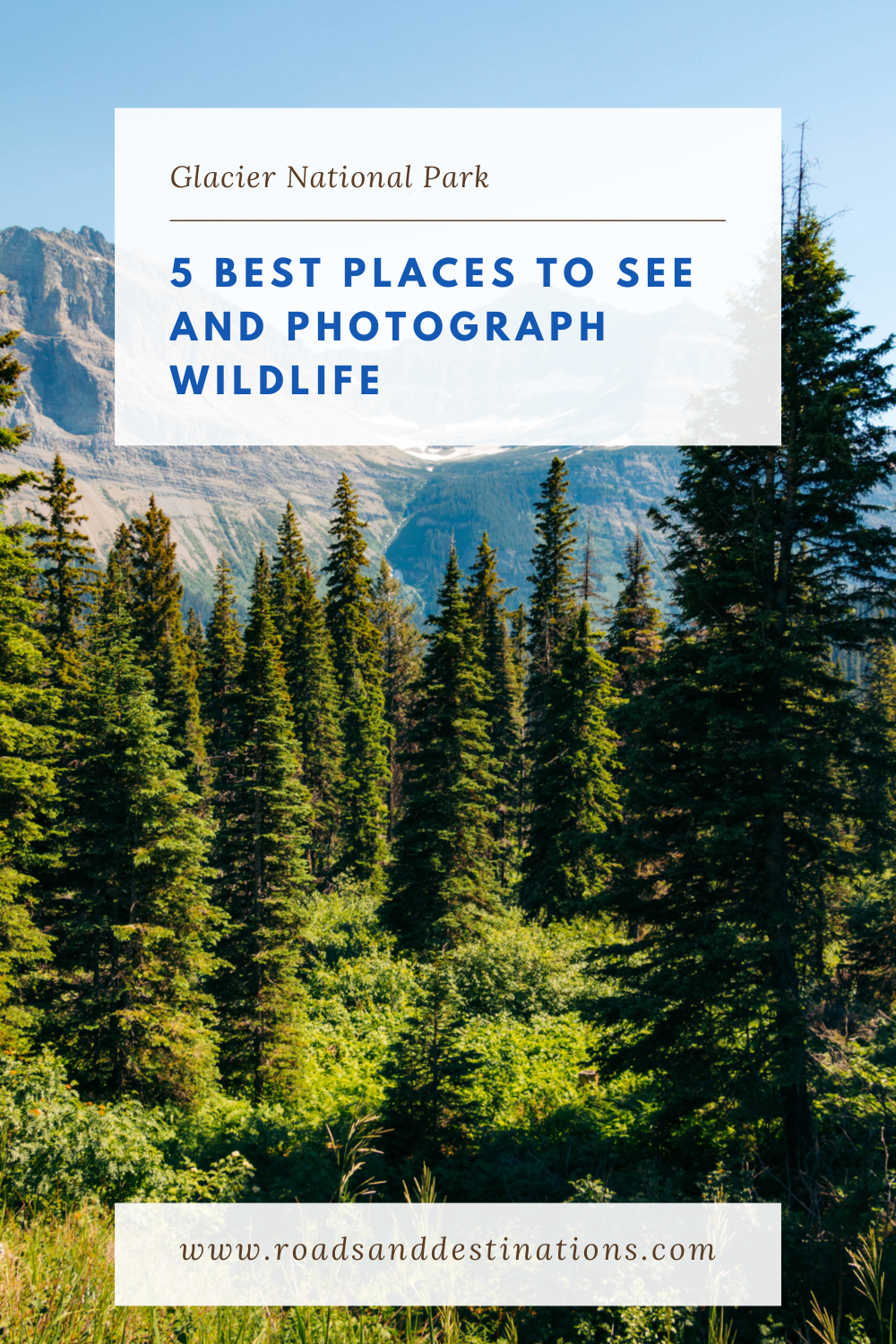With over 70 species of mammals and 276 species of birds, wildlife in Glacier National Park is as enticing as floating glaciers atop the mountains. Ready to find it out for yourself. Then let’s stop at these 5 places where you can see and photograph the rich wildlife family of Glacier.
Last updated: June 15, 2025
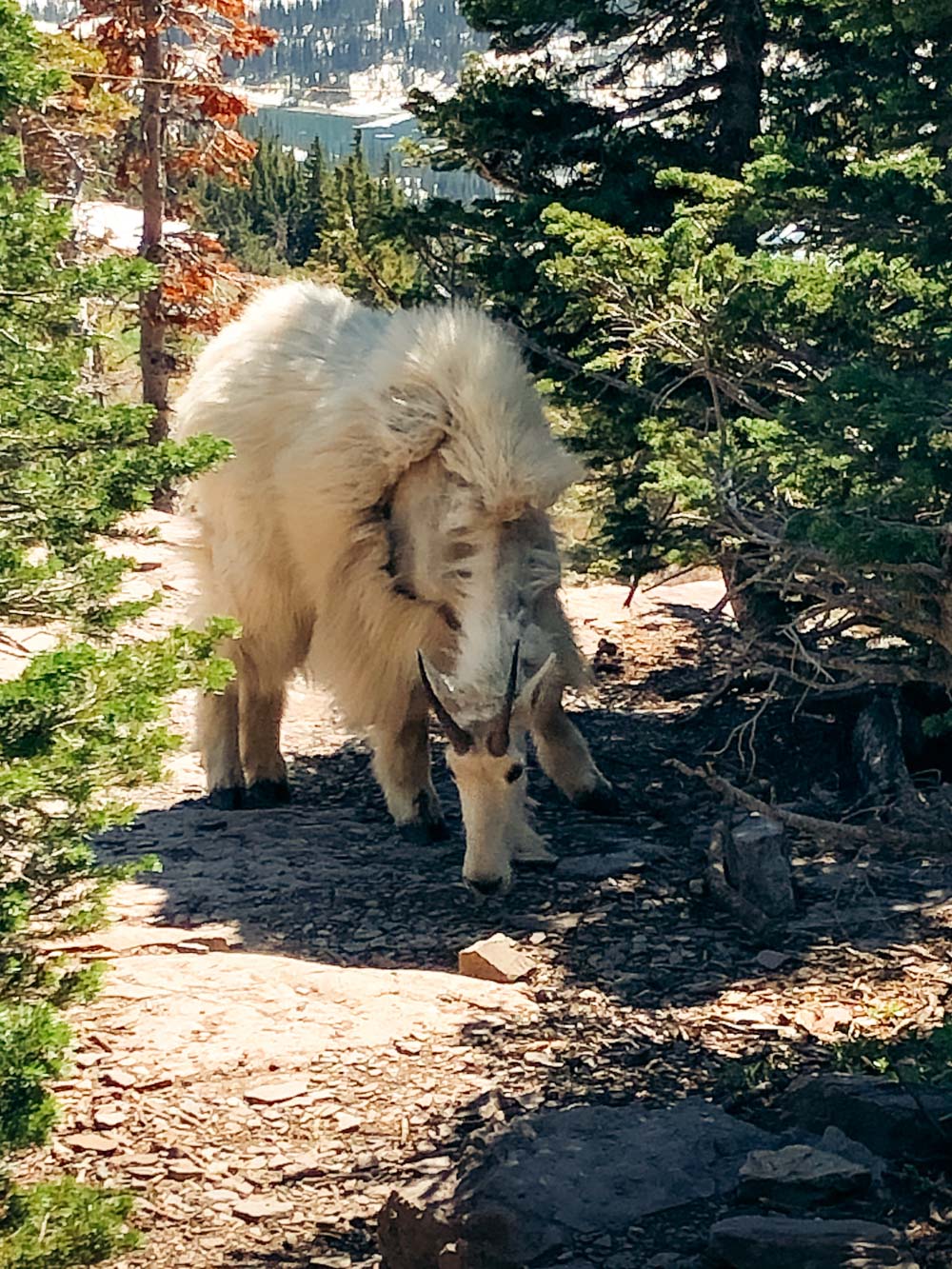
Where to See and Photograph Wildlife in Glacier National Park
Clumsy grizzly and black bears, curious mountain goats, overprotective bighorn sheep – wildlife is a valuable part of Glacier National Park. Home to 71 species of mammals and nearly 300 species of birds, the area provides a safe environment for animals to thrive and ample opportunities for human visitors to see these wild inhabitants.
Wildlife in Glacier National Park, however, doesn’t wait for a special invitation to enter a specific area. Neither it strives to impress hordes of visitors that gather in the most predictable animals’ spots. The wild “dwellers” of Glacier roam freely, often popping up in the most unexpected places.
Why do we then try to specify the areas where we have higher probability of seeing and possibly photographing wildlife in Glacier National Park? This question comes with an easy answer. While you can spot wildlife at any time and anywhere within Glacier National Park, some animals stick to a few particular places.
So it’s not rare to see a bear, the most coveted member of the local wildlife, while driving in East Glacier. Mountain goats and bighorn sheep allure you to enter their main realm. Well… don’t their names already imply that these members of the wildlife reside at higher elevations in Glacier National Park?
It sounds quite predictable, doesn’t it? Yet although we’ve just confirmed that wildlife in Glacier National Park has never abandoned (and certainly will not) its nomadic lifestyle, there’re a few places where you have more chances to see and photograph the wild animals. We’ll get to them in just a moment. As for now, let’s see what wildlife you can spot and photograph in Glacier National Park.
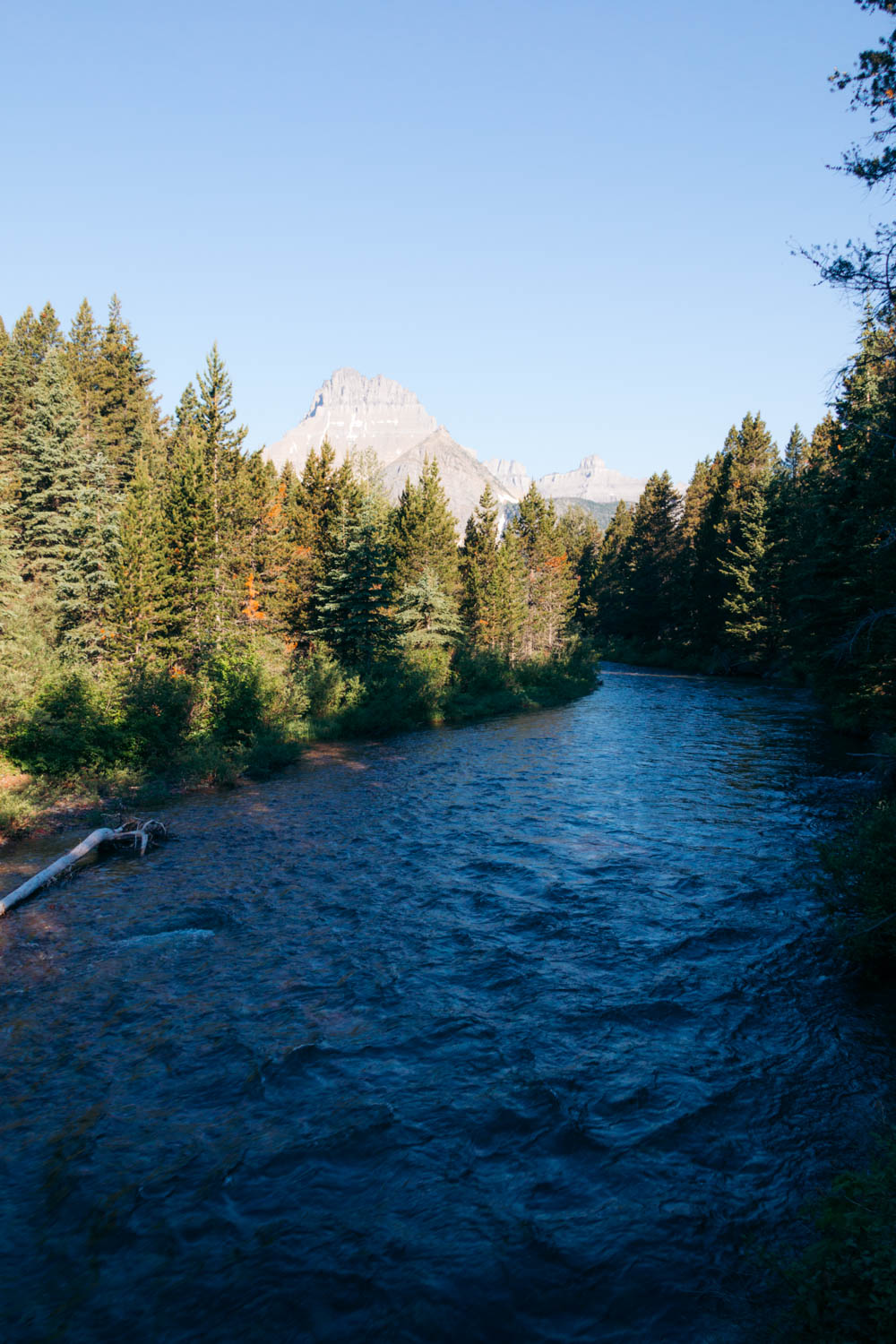
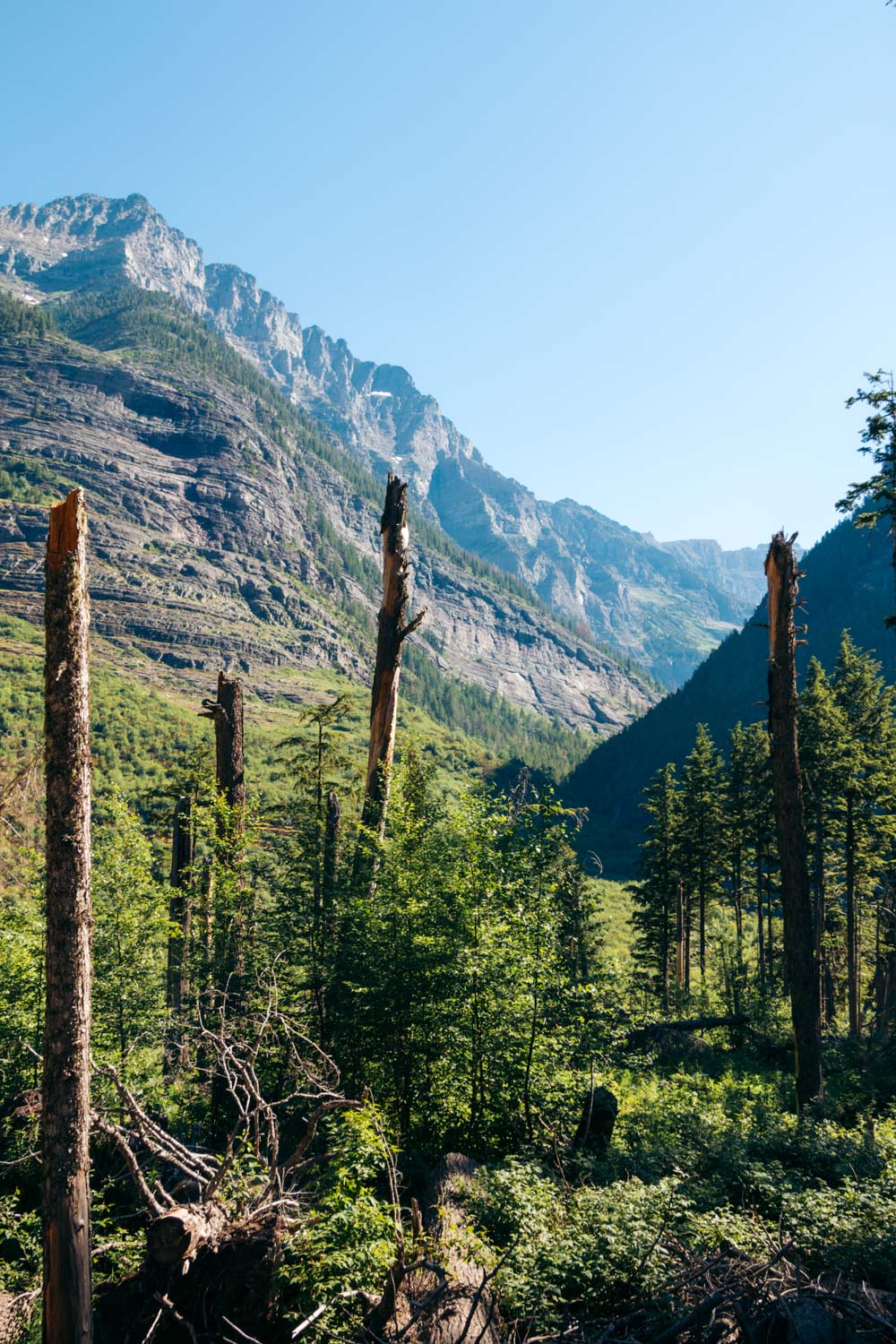
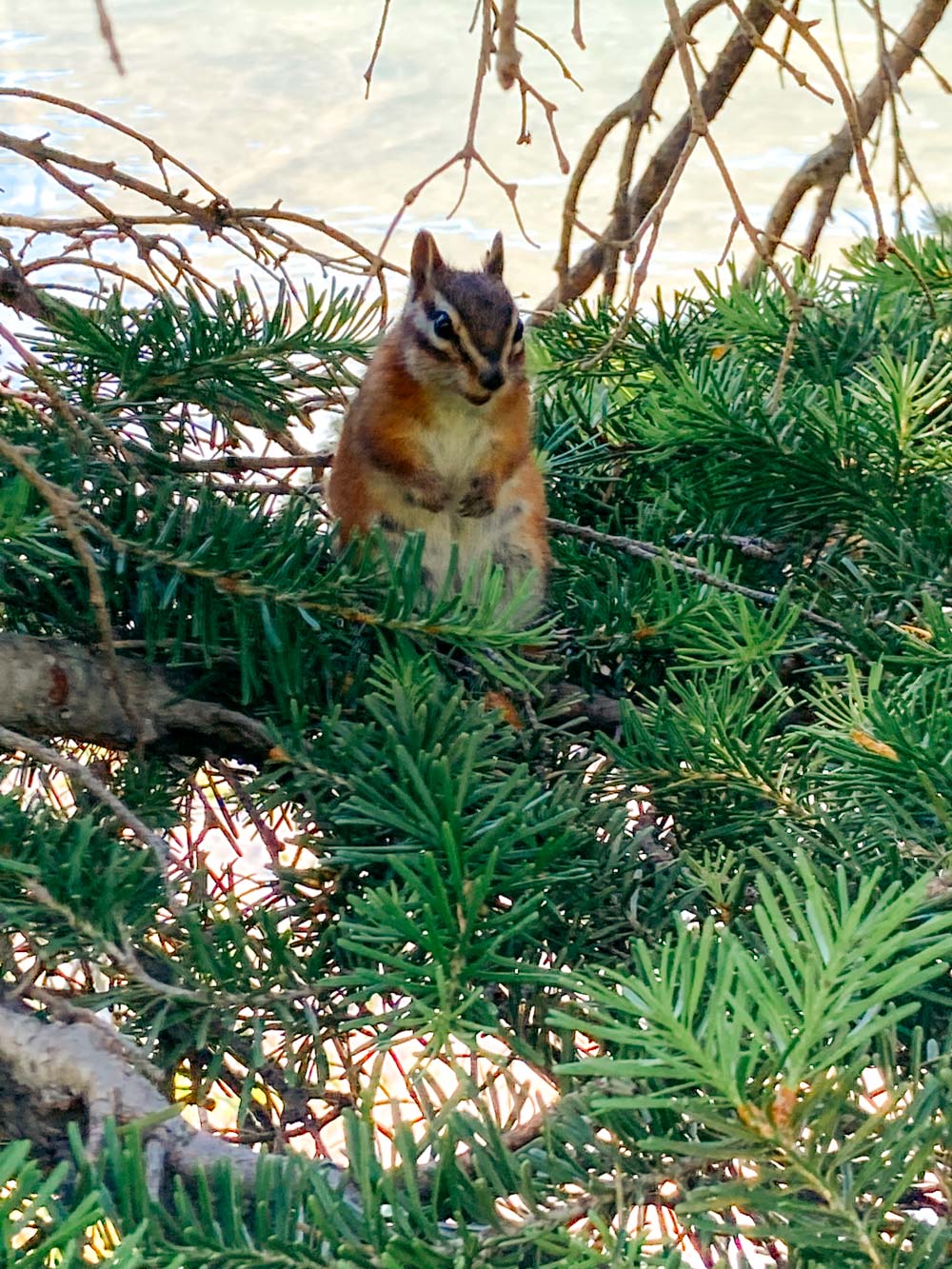
What Wildlife Can You See and Photograph in Glacier National Park?
When you set off on a hiking adventure in Glacier National Park, certain representatives of local wildlife may observe you from a distance. If you’re lucky, you can spot them as well. With that said, the most popular animals to see in the park are either large and fearless as bears or tiny and fast like a blizzard. The latter category includes pikas or chipmunks.
The other popular animals to encounter in the area includes moose, mountain goats, elk, and bighorn sheep. So keep your binoculars handy and have your cameras set up to see and photograph the following members of the extended wildlife family of Glacier National Park.
Bears
In Yellowstone National Park, strong bison with massive heads wear invisible crowns of unofficial kings of Wyoming. In Glacier National Park, this fame has been bestowed on bears. Home to both black and grizzly bears, Montana’s largest national park provides a safe haven to the largest populations of grizzly bears in the lower 48 states.
Bighorn Sheep
The bighorn sheep is one of the most common wildlife representatives to see in Glacier National Park. Inhabiting mostly alpine meadows and grassy mountain slopes, they are excellent at escaping predators and surviving harsh Montana’s winters.
Mountain Goats
A large concentration of mountain goats makes them some of the likely members of the big wildlife family to see in Glacier National Park. Similar to its closest relatives, bighorn sheep, these animals reside on the cliffs at high elevations where they feed on grasses, herbs, moss, twigs, and conifer leaves. Their two-layered wool keeps them warm even at the temperatures as low as minus 50 degrees Fahrenheit.
Elk
Some of the largest species of Glacier National Park’s wildlife, elk inhabit different areas. In the summer, they often surprise oblivious hikers and landscape and wildlife photographers at higher elevations where grasses and plants abound. When the winter comes, the animals relocate to lower “homes”. The best places to see Montana’s wildlife during the colder times are winter feeding grounds in both East and West Glacier.
Chipmunks
Some of the cutest members of Glacier National Park’s wildlife, the chipmunks are famous for their striking coloration. Several segments of yellow stripes dignify their heads, bodies, and tails. Unlike the elusive bears or elk, you can see and photograph plenty of chipmunks at low and high elevations.
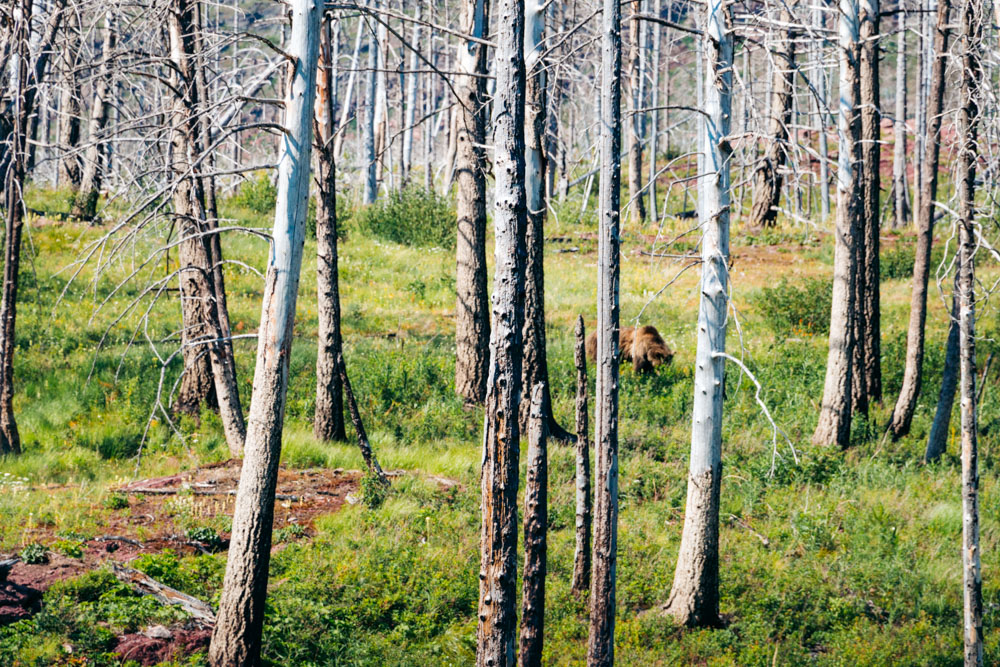
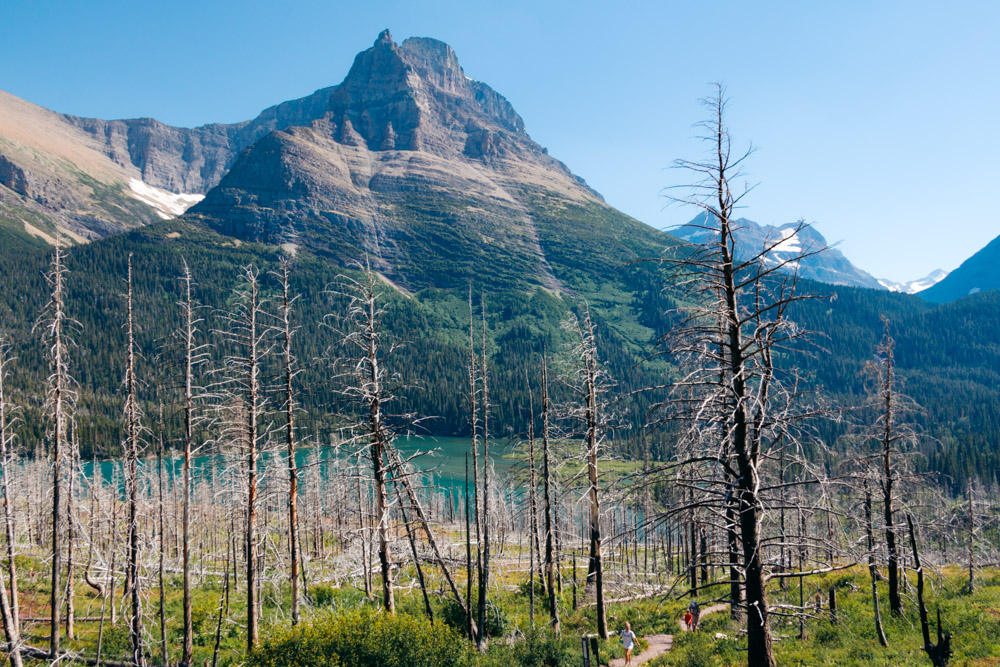
Other Wildlife to See and Photograph in Glacier National Park
A much wider range of wildlife dwell and can be occasionally seen in Glacier National Park. Some wild animals barely come into contact with human visitors, preferring the solitude of the most isolated corners of the park. If you are really lucky, you can see and even photograph the following members of Glacier National Park’s wildlife.
- Marmots
- Wolverines, red and swift foxed, coyotes, and gray wolves
- Brown bats
- Beavers
- Lynx, bobcat, and mountain lions
- Pikas
- White-tailed deer, mule deer, and pronghorn
- Moose
- Bald and golden eagles
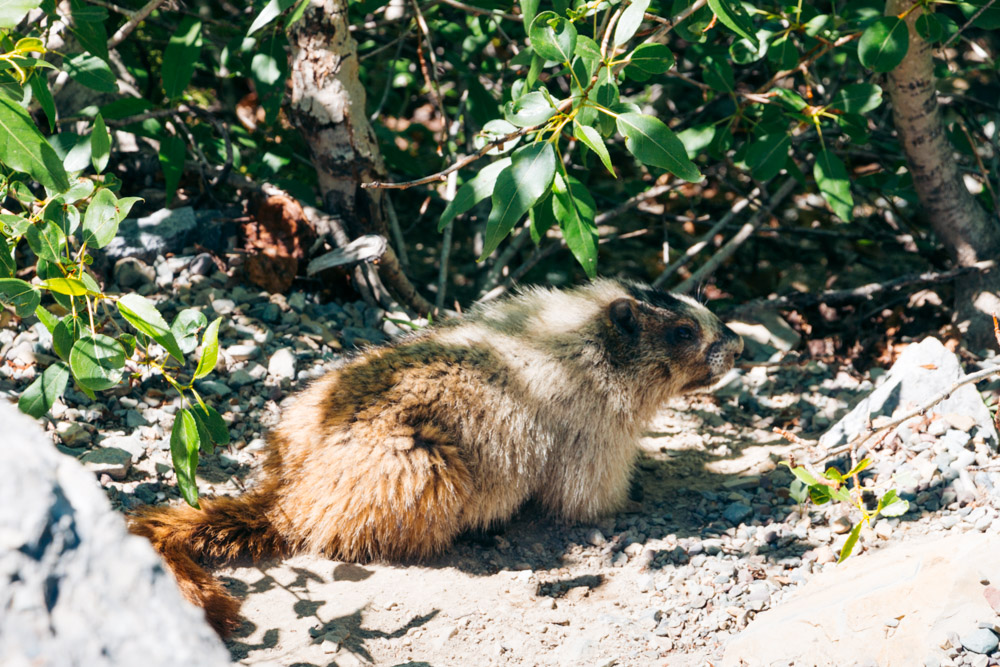
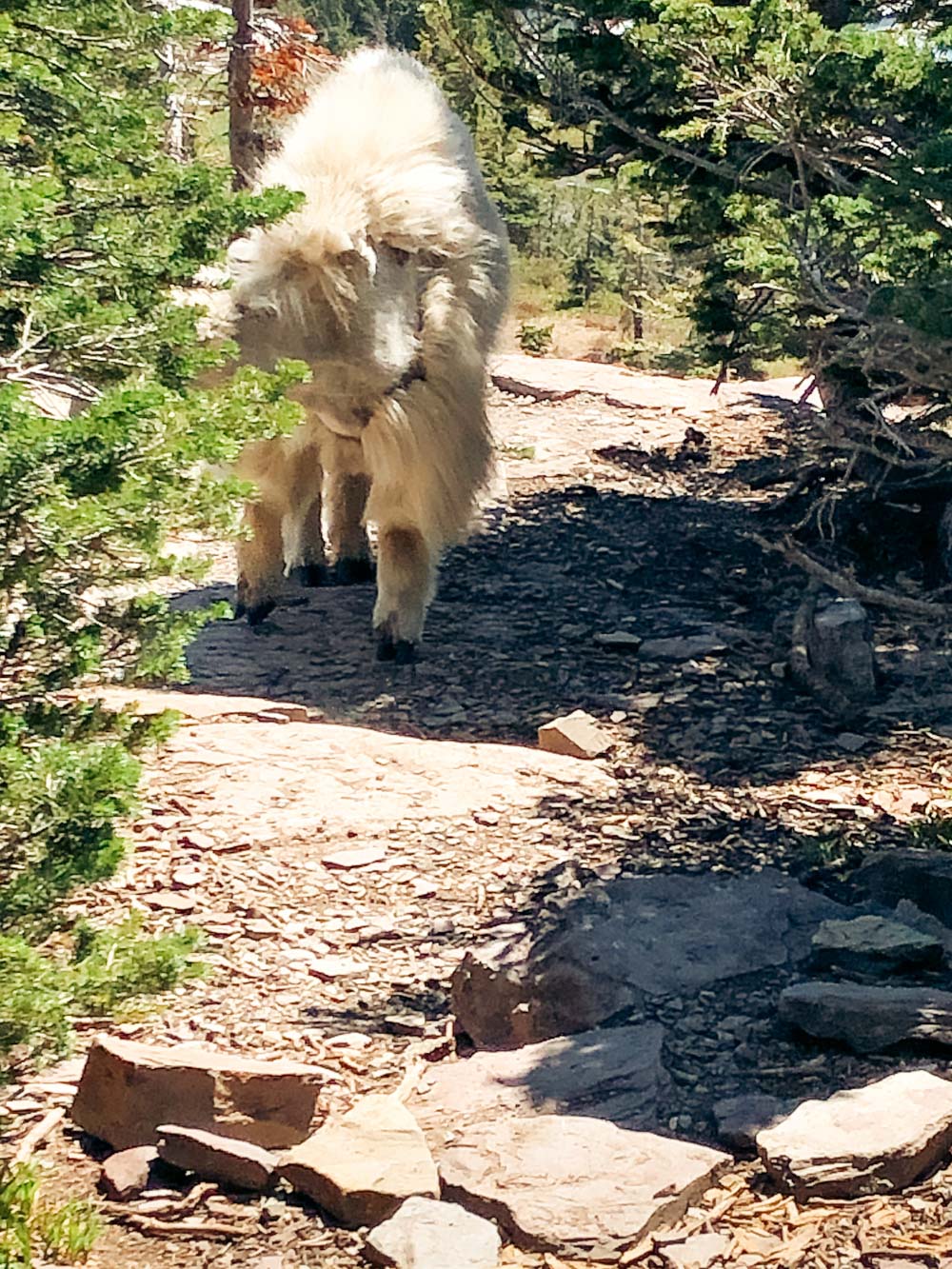
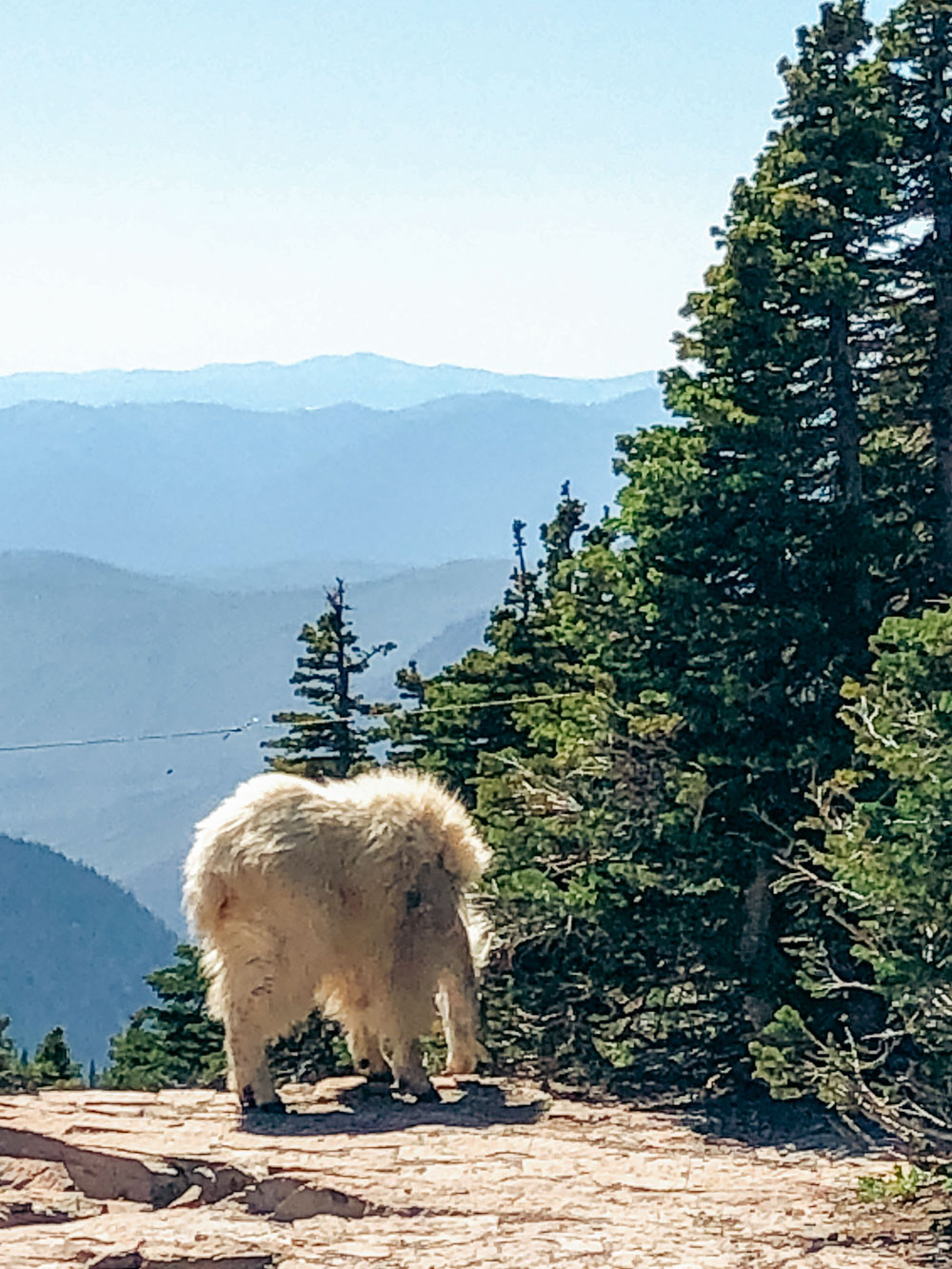
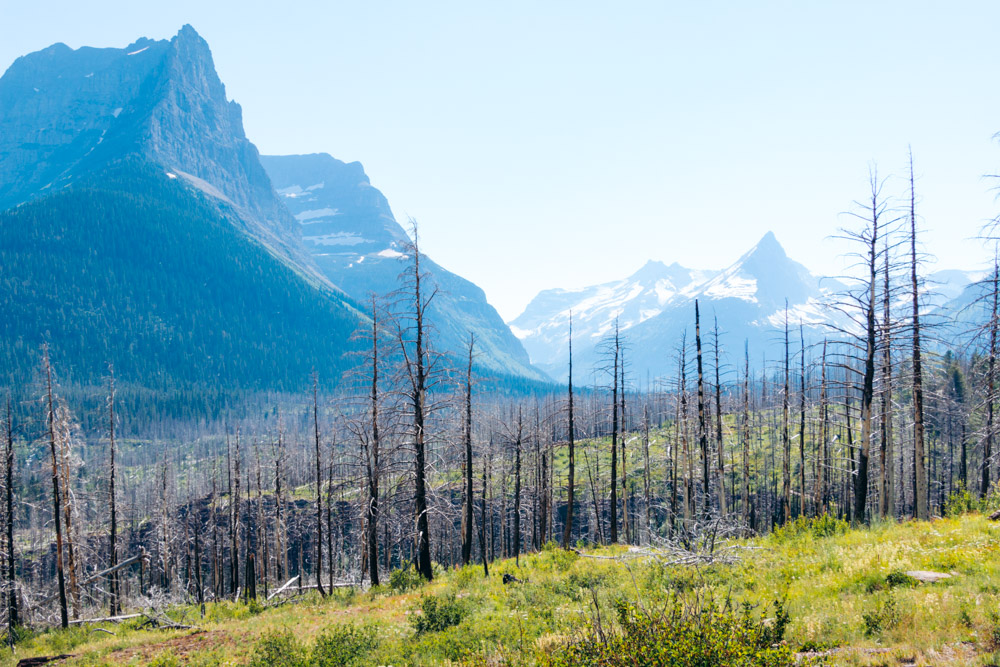
THE 5 BEST PLACES TO SEE AND PHOTOGRAPH WILDLIFE IN GLACIER NATIONAL PARK
1. Logan Pass
The picture-perfect Logan Pass area is one of the most reliable places to see and photograph wildlife in Glacier National Park. Located along the famous Going-to-the-Sun Road, the area is home to a profusion of wild animals. From mountain goats and bighorn sheep frequenting the area along the Hidden Lake Overlook Trail to occasional bears roaming at the bottom of the snow-capped mountains, Logan Pass is a wildlife photographer’s paradise.
If luck is on your side, you can even spot and capture several images of a marmot or wolverine. So be sure to bring along a telephoto lens to zoom in and photograph in detail the diverse Glacier National Park’s wildlife.
2. Many Glacier Valley
The wildlife is not a rare thing to see and photograph in the Many Glacier Valley. Encompassing pristine lakes and dense forest, the area is home to moose, elk, white-tailed deer, and mule. Furthermore, hiking along the Swiftcurrent Nature Trail increases your chances of spotting a bear.
But again, Glacier National Park’s wildlife is unpredictable. We trod the running-through-the-forest Nature Trail with no bears in sight. Pikas and chipmunks, however, didn’t mind our presence and continued munching on flowers while we were vigorously pressing the shutter buttons of our cameras.
If you look for the most likely places to see and shoot moose, check out Fishercap Lake. The place sits a stone’s throw away from the Many Glacier Hotel, one of the finest historic structures on the West Coast still in operation.
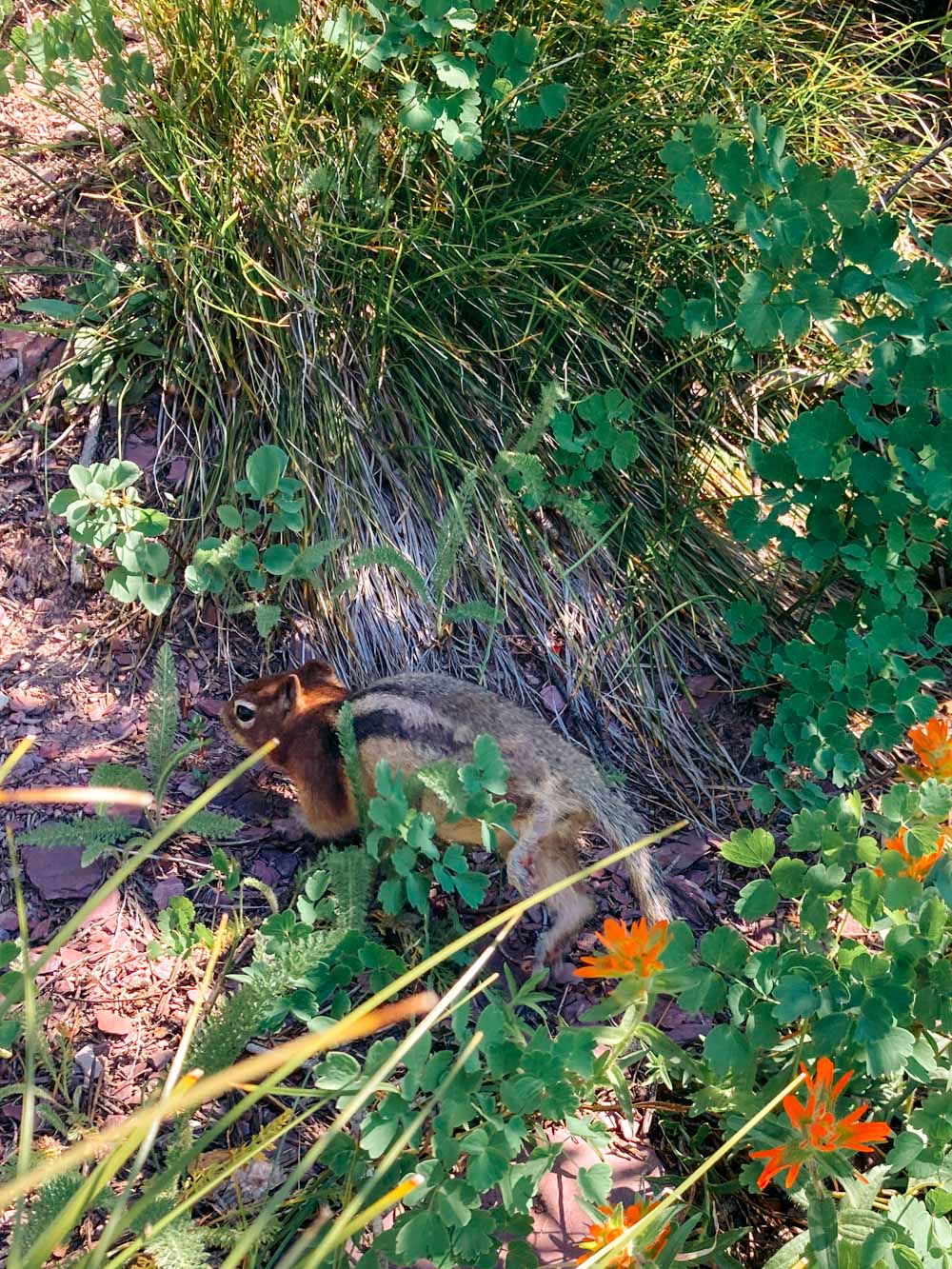
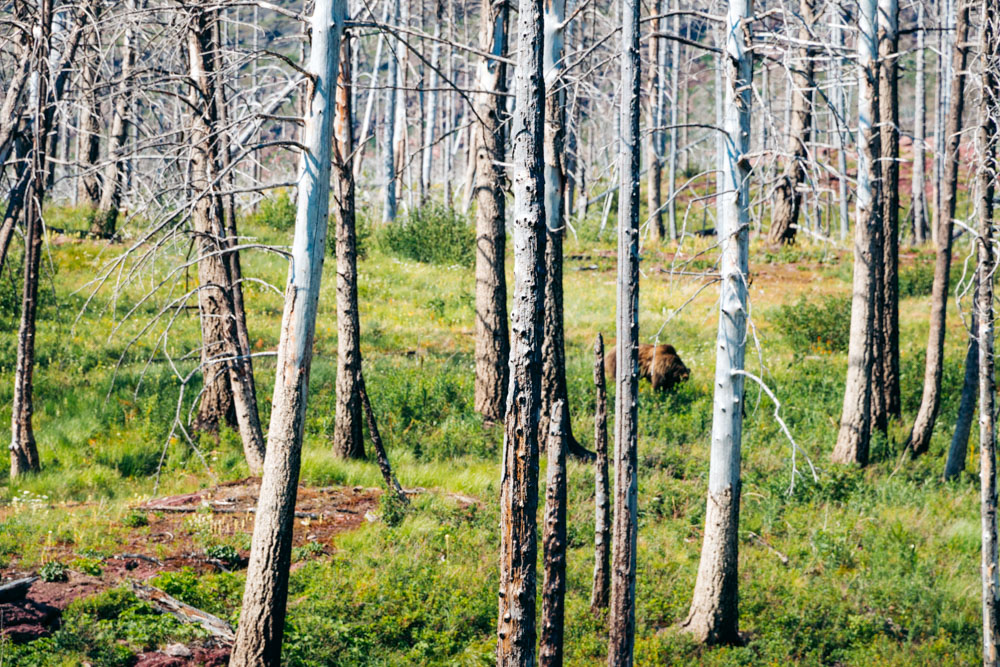
3. Grinnell Glacier Viewpoint
Since you’ve made it all the way to Many Glacier, continue on along the Grinnell Glacier Trail for a chance to see the most popular representatives of local wildlife: bighorn sheep and mountain goats. The scenic 10.6-mile, round-trip hike can be tedious, though. Yet it’s definitely rewarding, especially for landscape and wildlife photographers.
And while the views of aquamarine Grinnell Lake sitting at the bottom of the mountains often steals the show, don’t forget to look up. Some of the friendliest inhabitants of Glacier National Park may be easing down the rocks right above you. Bears are also not strangers to this glorious side of the park. Sadly (or luckily as we were not prepared to protect ourselves from bears on this hike), we didn’t spot any of them here.
4. East Glacier: Wildlife to See and Photograph in the Sun Point Area
The place where we actually saw a bear surprised even us. As we were driving along the Going-to-the-Sun Road on the eastern side of Glacier, this chubby representative of local wildlife stopped the traffic in both directions. Paying zero attention to more than a dozen surprised and overjoyed onlookers, the bear continued roaming between the trees.
Probably, wild berries kept him occupied, or the influx of visitors wishing to see Glacier National Park’s wildlife doesn’t bother him any longer.
Moose also frequent this area, offering a myriad of opportunities for wildlife photography.
5. The North Fork
The isolated North Fork provides a safe home to moose, white-tailed deer, and mule deer. You can find these animals roaming freely near Bowman Lake. Moreover, this part of Glacier increases your chances of photographing the most elusive wild animals: timber wolves. Just keep driving along the North Fork Road. You never know what wildlife you can see in this remote and overlooked area of Glacier.
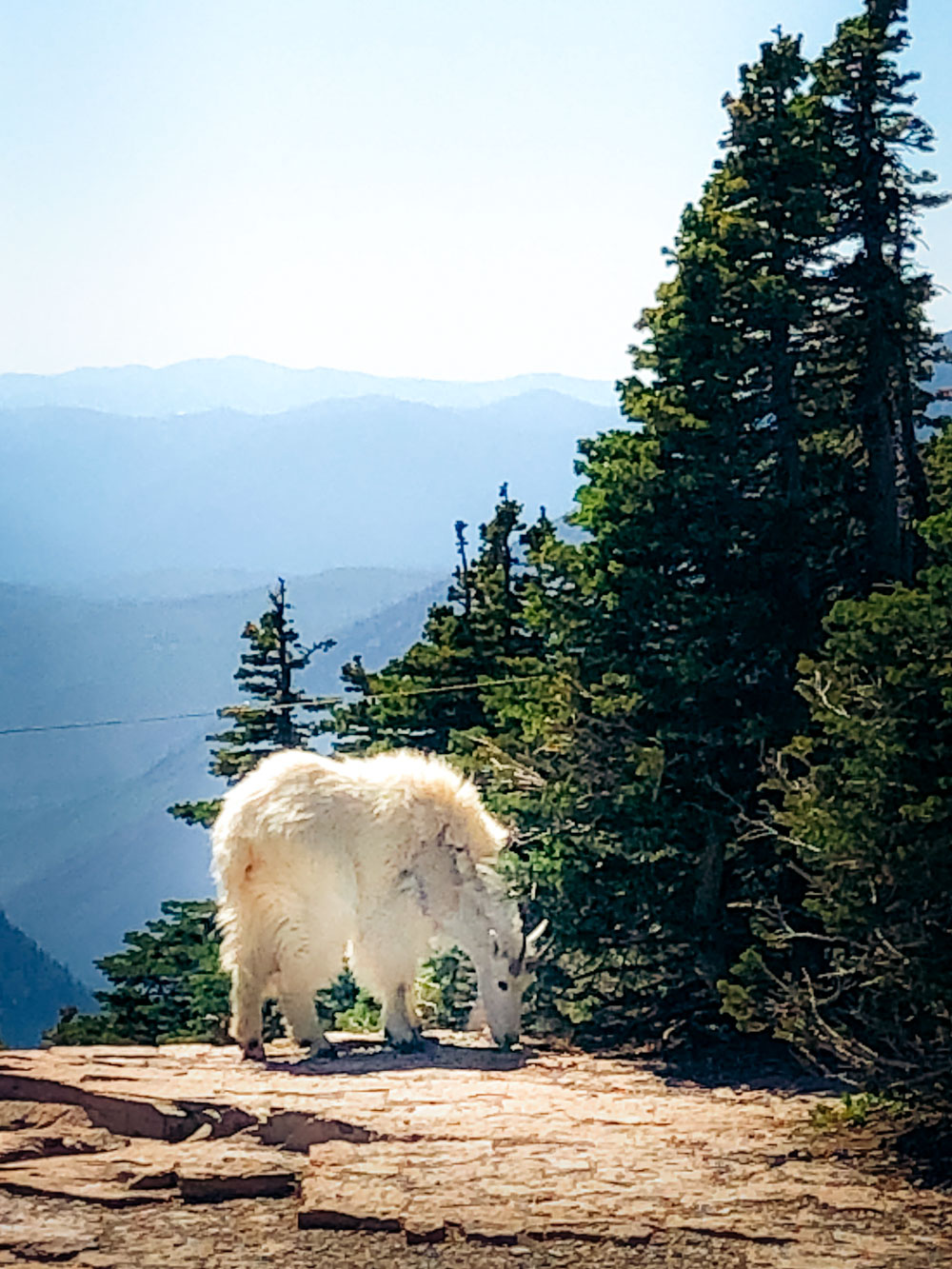
Tips for Encountering and Photographing Wildlife in Glacier National Park
1. Know Optimal Time to See and Photograph Wildlife in Glacier
The best times to see and photograph wildlife in Glacier National Park are early mornings and evenings. The sun is low enough during these times to allow the animals to leave their hideouts. And since the majority of hikers traverse the popular trails during the day, wildlife feels less frightened and disturbed early in the morning or late in the evening.
READ MORE: The Best Time to Visit Glacier National Park: Seasonal Activities
2. Look Around and Stop Frequently
Focusing solely on your final destination at the end of the trail, you’re more likely to miss out on the opportunities to see and eventually photograph Glacier National Park’s wildlife. Thus, be vigilant and look around frequently.
3. Bring Binoculars
Wildlife often roams nearby. Your eye, however, may not be capable of detecting the animals camouflaged with mud or leaves in their natural habitats. So use binoculars to see that mountain goat sitting on a cliff above the trail or a marmot digging out something from the ground.
4. Keep a Safe Distance
Enjoy Glacier’s wildlife at a safe distance. For bears and wolves, it’s 100 yards. When photographing and observing any other animals, make sure to stay at least 25 yards away from them. Furthermore, steer clear of animals’ migratory paths when in Glacier National Park and move away safely if a wild creature tries to approach you.
5. Use Telephoto Lens
Instead of risking your life and approaching the wild animals, use a telephoto lens for a close-up image of Glacier’s wildlife.
6. Don’t Feed or Pose a Risk to Wild Animals
They say a fed bear is a dead bear. A mammal that has tried human food increases its chances of being hit by a vehicle or shot. Same is true for all other wild animals. Thus, do your due diligence and make sure that nobody is hurt when you watch or photograph Glacier’s wildlife next time.
Read More
- PHOTOGRAPHY IN GLACIER: 8 Iconic Photo Spots in Glacier National Park
- LAKE HIKES IN GLACIER: How to Hike to Avalanche Lake
- BEST HIKES IN GLACIER: The Best Trails for Hiking with Kids in Glacier National Park
- BEST WATERFALLS: The 14 Most Photographed Cascades and Waterfalls in Glacier
- BEST THINGS TO DO: 10 Incredible Places not to Miss in Glacier National Park
